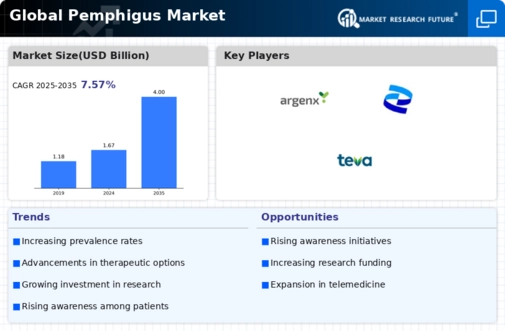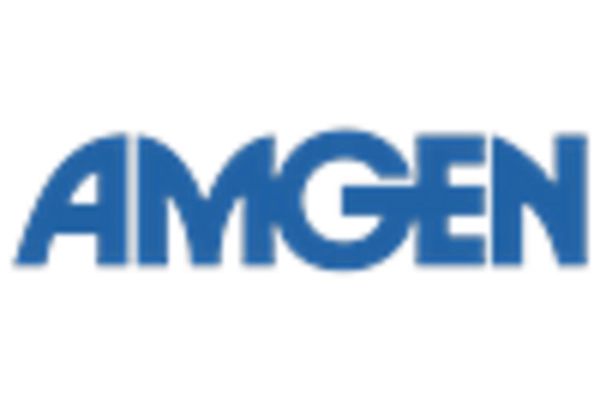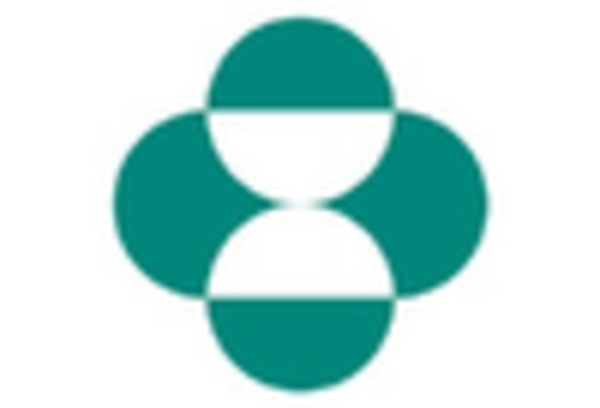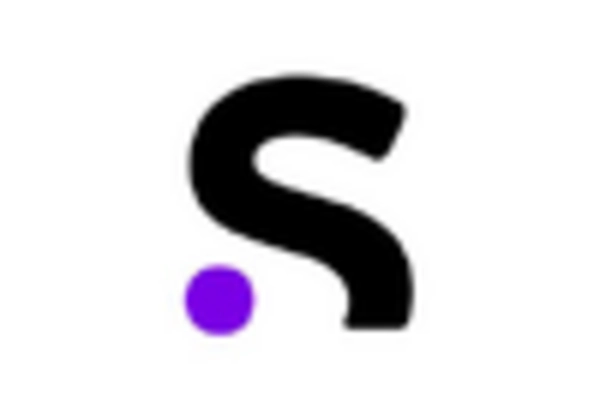-
Definition
-
Scope of the Study
- Research Objective
- Assumptions
- Limitations
-
Introduction
-
Primary Research
-
Secondary Research
-
Market Size Estimation
-
Drivers
-
Restraints
-
Opportunities
-
Challenges
-
Macroeconomic Indicators
-
Technology Trends & Assessment
-
Porter’s Five Forces Analysis
- Bargaining Power of Suppliers
- Bargaining Power of Buyers
- Threat of New Entrants
- Threat of Substitutes
- Intensity of Rivalry
-
Value Chain Analysis
-
Investment Feasibility Analysis
-
Pricing Analysis
-
Chapter 6. Global Pemphigus Market, by Pemphigus Types
-
Introduction
-
Pemphigus Vulgaris
-
Market Estimates & Forecast, by Region, 2020–2027
-
Market Estimates & Forecast, by Country, 2020–2027
-
Pemphigus Foliaceus
-
Market Estimates & Forecast, by Region, 2020–2027
-
Market Estimates & Forecast, by Country, 2020–2027
-
Pemphigus Vegetans
-
Market Estimates & Forecast, by Region, 2020–2027
-
Market Estimates & Forecast, by Country, 2020–2027
-
Paraneoplastic Pemphigus
-
Market Estimates & Forecast, by Region, 2020–2027
-
Market Estimates & Forecast, by Country, 2020–2027
-
Chapter 7. Global Pemphigus Market, by Diagnosis
-
Introduction
-
Skin Peeling
-
Market Estimates & Forecast, by Region, 2020–2027
-
Market Estimates & Forecast, by Country, 2020–2027
-
Skin Biopsy
-
Market Estimates & Forecast, by Region, 2020–2027
-
Market Estimates & Forecast, by Country, 2020–2027
-
Run Blood Tests
-
Market Estimates & Forecast, by Region, 2020–2027
-
Market Estimates & Forecast, by Country, 2020–2027
-
Endoscopy
-
Market Estimates & Forecast, by Region, 2020–2027
-
Market Estimates & Forecast, by Country, 2020–2027
-
Chapter 8. Global Pemphigus Market, by Treatment
-
Introduction
-
Corticosteroids
-
Market Estimates & Forecast, by Region, 2020–2027
-
Market Estimates & Forecast, by Country, 2020–2027
-
Initial Therapy
-
Market Estimates & Forecast, by Region, 2020–2027
-
Market Estimates & Forecast, by Country, 2020–2027
-
Maintenance Therapy
-
Market Estimates & Forecast, by Region, 2020–2027
-
Market Estimates & Forecast, by Country, 2020–2027
-
Immunosuppressants
-
Market Estimates & Forecast, by Region, 2020–2027
-
Market Estimates & Forecast, by Country, 2020–2027
-
Biological Therapies
-
Market Estimates & Forecast, by Region, 2020–2027
-
Market Estimates & Forecast, by Country, 2020–2027
-
Intravenous Immunoglobulin (IVIG) Therapy
-
Market Estimates & Forecast, by Region, 2020–2027
-
Market Estimates & Forecast, by Country, 2020–2027
-
Other medication
-
Market Estimates & Forecast, by Region, 2020–2027
-
Market Estimates & Forecast, by Country, 2020–2027
-
Chapter 9. Global Pemphigus Market, by End User
-
Introduction
-
Laboratories
-
Market Estimates & Forecast, by Region, 2020–2027
-
Market Estimates & Forecast, by Country, 2020–2027
-
Hospitals and Clinics
-
Market Estimates & Forecast, by Region, 2020–2027
-
Market Estimates & Forecast, by Country, 2020–2027
-
Academic and Research Institutes
-
Market Estimates & Forecast, by Region, 2020–2027
-
Market Estimates & Forecast, by Country, 2020–2027
-
Chapter 10. Global Pemphigus Market, by Region
-
Introduction
-
Americas
- North America
- South America
-
Europe
- Western Europe
- Eastern Europe
-
Asia-Pacific
- Japan
- China
- India
- Australia
- South Korea
- Rest of Asia-Pacific
-
Middle East & Africa
- Middle East
- Africa
-
Chapter 11. Company Landscape
-
Introduction
-
Market Share Analysis
-
Key Development & Strategies
-
Chapter 12. Company Profiles
-
Novartis Pharmaceuticals
- Company Overview
- Product Overview
- Financials Overview
- Key Developments
- SWOT Analysis
-
Hoffmann-La Roche
- Company Overview
- Product Overview
- Financial Overview
- Key Developments
- SWOT Analysis
-
Principia Biopharma, Inc
- Company Overview
- Product Overview
- Financial Overview
- Key Development
- SWOT Analysis
-
Argenx
- Company Overview
- Product Overview
- Financial Overview
- Key Development
- SWOT Analysis
-
Sanofi S.A.
- Company Overview
- Product Overview
- Financial overview
- Key Developments
- SWOT Analysis
-
Pfizer Inc
- Company Overview
- Product Overview
- Financial Overview
- Key Developments
- SWOT Analysis
-
Teligent Inc
- Overview
- Product Overview
- Financial Overview
- Key Developments
- SWOT Analysis
-
GlaxoSmithKline LLC
- Overview
- Product Overview
- Financials
- Key Developments
- SWOT Analysis
-
Teva Pharmaceutical Industries
- Overview
- Product Overview
- Financials
- Key Developments
- SWOT Analysis
-
Chapter 13 MRFR Conclusion
-
Key Findings
- From CEO’s Viewpoint
- Unmet Needs of the Market
-
Key Companies to Watch
-
Predictions for the Pemphigus Industry
-
Chapter 14. Appendix
-
-
LIST OF TABLES
-
Global Pemphigus Market Synopsis, 2020–2027
-
Global Pemphigus Market Estimates and Forecast, 2020–2027
-
(USD Million)
-
Global Pemphigus Market, by Region, 2020–2027 (USD Million)
-
Global Pemphigus Market, by Pemphigus Types, 2020–2027 (USD Million)
-
Global Pemphigus Market, by Diagnosis, 2020–2027(USD Million)
-
Global Pemphigus Market, by Treatment, 2020–2027 (USD Million)
-
Global Pemphigus Market, by End User, 2020–2027 (USD Million)
-
North America: Pemphigus Market, by Pemphigus Types, 2020–2027 (USD
-
Million)
-
North America: Pemphigus Market, by Diagnosis, 2020–2027 (USD Million)
-
North America: Pemphigus Market, by Treatment, 2020–2027 (USD Million)
-
North America: Pemphigus Market, by End-User, 2020–2027 (USD Million)
-
US: Pemphigus Market, by Pemphigus Types, 2020–2027 (USD Million)
-
US: Pemphigus Market, by Diagnosis, 2020–2027 (USD Million)
-
US: Pemphigus Market, by Treatment, 2020–2027 (USD Million)
-
US: Pemphigus Market, by End User, 2020–2027 (USD Million)
-
Canada: Pemphigus Market, by Pemphigus Types, 2020–2027 (USD Million)
-
Canada: Pemphigus Market, by Diagnosis, 2020–2027 (USD Million)
-
Canada: Pemphigus Market, by Treatment, 2020–2027 (USD Million)
-
Canada: Pemphigus Market, by End-User, 2020–2027 (USD Million)
-
South America: Pemphigus Market, by Pemphigus Types, 2020–2027 (USD
-
Million)
-
South America: Pemphigus Market, by Diagnosis, 2020–2027 (USD Million)
-
South America: Pemphigus Market, by Treatment, 2020–2027 (USD Million)
-
South America: Pemphigus Market, by End-User, 2020–2027 (USD Million)
-
Europe: Pemphigus Market, by Pemphigus Types, 2020–2027 (USD Million)
-
Europe: Pemphigus Market, by Diagnosis, 2020–2027 (USD Million)
-
Europe: Pemphigus Market, by Treatment, 2020–2027 (USD Million)
-
Europe: Pemphigus Market, by End-User, 2020–2027 (USD Million)
-
Western Europe: Pemphigus Market, by Pemphigus Types, 2020–2027 (USD
-
Million)
-
Western Europe: Pemphigus Market, by Diagnosis, 2020–2027 (USD Million)
-
Western Europe: Pemphigus Market, by Treatment, 2020–2027 (USD Million)
-
Western Europe: Pemphigus Market, by End-User, 2020–2027 (USD Million)
-
Eastern Europe: Pemphigus Market, by Pemphigus Types, 2020–2027 (USD
-
Million)
-
Eastern Europe: Pemphigus Market, by Diagnosis, 2020–2027 (USD Million)
-
Eastern Europe: Pemphigus Market, by Treatment, 2020–2027 (USD Million)
-
Eastern Europe: Pemphigus Market, by End-User, 2020–2027(USD Million)
-
Asia-Pacific: Pemphigus Market, by Pemphigus Types, 2020–2027 (USD
-
Million)
-
Asia-Pacific: Pemphigus Market, by Diagnosis, 2020–2027 (USD Million)
-
Asia-Pacific: Pemphigus Market, by Treatment, 2020–2027 (USD Million)
-
Asia-Pacific: Pemphigus Market, by End-User, 2020–2027 (USD Million)
-
Middle East & Africa: Pemphigus Market, by Pemphigus Types, 2020–2027
-
(USD Million)
-
Middle East & Africa: Pemphigus Market, by Technology, 2020–2027 (USD Million)
-
Middle East & Africa: Pemphigus Market, by Treatment, 2020–2027 (USD Million)
-
Middle East & Africa: Pemphigus Market, by End-User, 2020–2027 (USD Million)
-
LIST OF FIGURES
-
Research Process
-
Segmentation for Global Pemphigus Market
-
Segmentation Market Dynamics for Global Pemphigus Market
-
Global Pemphigus Market Share, By Pemphigus Types, 2020
-
Global Pemphigus Market Share, By Diagnosis, 2020
-
Global Pemphigus Market Share, By Treatment, 2020
-
Global Pemphigus Market Share, By End User, 2020
-
Global Pemphigus Market Share, By Region, 2020
-
North America: Pemphigus Market Share, By Country, 2020
-
Europe: Pemphigus Market Share, By Country, 2020
-
Asia-Pacific: Pemphigus Market Share, By Country, 2020
-
Middle East & Africa: Pemphigus Market Share, By Country, 2020
-
Global Pemphigus Market: Company Share Analysis, 2020 (%)
-
Novartis Pharmaceuticals.: Key Financials
-
Novartis Pharmaceuticals.: Segmental Revenue
-
Novartis Pharmaceuticals.: Geographical Revenue
-
Hoffmann-La Roche.: Key Financials
-
Hoffmann-La Roche.: Segmental Revenue
-
Hoffmann-La Roche.: Geographical Revenue
-
Principia Biopharma, Inc.: Key Financials
-
Principia Biopharma, Inc.: Segmental Revenue
-
Principia Biopharma, Inc.: Geographical Revenue
-
Argenx: Key Financials
-
Argenx: Segmental Revenue
-
Argenx: Geographical Revenue
-
Sanofi S.A.: Key Financials
-
Sanofi S.A.: Segmental Revenue
-
Sanofi S.A.: Geographical Revenue
-
Pfizer Inc: Key Financials
-
Pfizer Inc: Segmental Revenue
-
Pfizer Inc: Geographical Revenue
-
Teligent Inc: Key Financials
-
Teligent Inc: Segmental Revenue
-
Teligent Inc: Geographical Revenue
-
GlaxoSmithKline LLC: Key Financials
-
GlaxoSmithKline LLC: Segmental Revenue
-
GlaxoSmithKline LLC: Geographical Revenue
-
Teva Pharmaceutical Industries.: Key Financials
-
Teva Pharmaceutical Industries.: Segmental Revenue
-
Teva Pharmaceutical Industries.: Geographical Revenue

















Leave a Comment